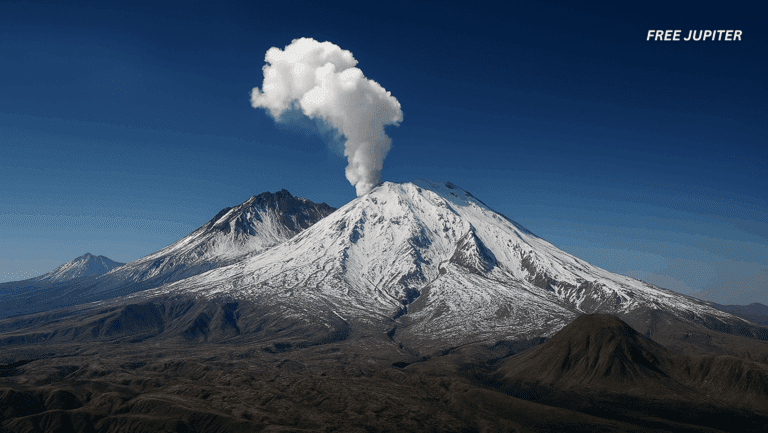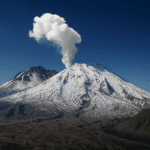Friendly Note: FreeJupiter.com shares general info for curious minds 🌟 Please fact-check all claims—and always check health matters with a professional 💙
Recent geological findings in China have unveiled what could be the most substantial energy breakthrough in modern times. Tucked away in the expansive plains of Inner Mongolia, the vast Bayan Obo mining site may soon become the world’s most important hub for clean, sustainable power. Scientists now estimate that this region harbors enough of a particular element to satisfy the entire nation’s energy appetite for tens of thousands of years.
The Discovery: A Resource Revolution
Geologists in China have long known that the Bayan Obo complex is rich in rare earth metals, but recent surveys have uncovered something even more remarkable. Deep beneath the earth, and even within the accumulated waste from decades of mining, lies an immense reserve of thorium. This slightly radioactive metal, once considered a byproduct of little value, is now at the center of a global energy revolution.
If fully extracted, the Bayan Obo site could yield up to a million metric tons of thorium—an amount that, if used in advanced nuclear reactors, could theoretically keep the lights on across China for an astonishing 60,000 years. To put this in perspective, just five years of waste material from local iron mining would contain enough thorium to power the United States for more than a millennium.
Thorium: The Energy Game Changer
Thorium is not new to science, but its potential as a fuel source has only recently been revisited with serious intent. Unlike uranium, which is the backbone of most current nuclear reactors, thorium is far more abundant in the Earth’s crust. It is also less prone to being used for weapons, and its waste products are less hazardous and easier to manage.
What makes thorium so special is not the metal itself, but what it can become. When exposed to neutrons, thorium transforms into uranium-233, a fissile isotope that can sustain a nuclear chain reaction. This process is the foundation of a new generation of reactors known as molten salt reactors, which use a mixture of thorium and lithium fluoride heated to extreme temperatures. The result is a reactor that is safer, produces less long-lived waste, and is nearly impossible to melt down.
The Rise of Molten Salt Reactors
China is leading the charge in developing thorium-based molten salt reactors. These systems are designed to be inherently safer than traditional nuclear plants. The reactor’s core remains at low pressure, reducing the risk of catastrophic failure. Moreover, the fuel is dissolved in molten salt, which acts as both a coolant and a medium for the nuclear reaction. This setup allows for continuous operation and efficient extraction of energy.
The country has already begun constructing the world’s first commercial-scale thorium molten salt reactor in the Gobi Desert. This facility is expected to generate 10 megawatts of electricity, with plans to expand capacity in the coming years. The long-term goal is to achieve energy independence and reduce reliance on fossil fuels.
Global Implications: A New Energy Race
The implications of China’s thorium discovery are profound, not just for the nation but for the entire planet. As countries race to secure their energy futures, thorium offers a path to abundant, clean power. The United States, Russia, and other major powers are all investing in nuclear technology, but China’s head start in thorium extraction and reactor development could give it a decisive advantage.
Recent reports indicate that there are over 230 thorium-rich zones identified across China, far exceeding previous estimates. This abundance could position China as the global leader in next-generation nuclear energy, reshaping geopolitical dynamics and energy markets.
Read more: Jupiter Used To Be Twice As Big — It Could Have Held 2,000 Earths Inside
The Environmental and Social Challenges
While the promise of thorium is immense, the reality of extracting and processing it is fraught with challenges. The Bayan Obo mining complex, already the world’s largest producer of rare earth minerals, has a legacy of environmental degradation. Decades of mining have led to severe air and water pollution, soil contamination, and significant loss of biodiversity. The nearby city of Baotou, known as China’s rare earth capital, has become a symbol of both technological progress and environmental sacrifice.
Processing thorium and rare earths requires extensive infrastructure and generates large amounts of waste. The Weikuang tailing dam, which stores mining byproducts, is a persistent source of pollution, affecting local water supplies and agricultural land. Addressing these environmental impacts will be crucial as China scales up thorium production.
The Science Behind Thorium Power
To understand why thorium is such a game changer, it helps to look at how nuclear reactors work. Traditional reactors use uranium-235 or plutonium-239 as fuel. These elements are fissile, meaning they can sustain a chain reaction that releases energy. Thorium, however, is not fissile on its own. Instead, it is “fertile,” meaning it can be converted into a fissile material—uranium-233—when exposed to neutrons.
In a molten salt reactor, thorium is mixed with lithium fluoride and heated to around 1,400 degrees Celsius. When neutrons are introduced, some of the thorium atoms absorb them and transform into uranium-233, which then undergoes fission, releasing energy and more neutrons. These neutrons, in turn, convert more thorium into fuel, creating a self-sustaining cycle.
This process is not only efficient but also produces far less long-lived radioactive waste than conventional reactors. The waste that is generated is easier to handle and poses less risk to the environment.
The Promise of Clean, Abundant Energy
The potential of thorium to provide clean, abundant energy cannot be overstated. Unlike fossil fuels, which emit greenhouse gases and contribute to climate change, thorium reactors produce minimal emissions. They also do not rely on the same supply chains as oil, gas, or coal, reducing vulnerability to geopolitical tensions.
China’s push for thorium energy is part of a broader strategy to achieve energy security and reduce its carbon footprint. With plans to build dozens of new nuclear power plants by 2030, the country is positioning itself as a leader in both conventional and advanced nuclear technologies.
The Global Context: Minerals and Power
The race for critical minerals is intensifying as nations seek to secure the raw materials needed for modern technology. China’s dominance in rare earth production is well known, but its control over thorium reserves could give it an even greater edge. Meanwhile, other countries are scrambling to catch up.
The United States, for example, has recently sought to secure access to critical minerals in Ukraine, including lithium, graphite, and rare earth elements. However, experts caution that even with these efforts, the US is unlikely to challenge China’s lead in the near term. China not only has the largest reserves but also the most advanced processing capabilities, making it difficult for others to compete.
The Path Forward: Challenges and Opportunities
Despite the excitement surrounding thorium, significant hurdles remain. Extracting and processing thorium is technically challenging and requires substantial investment in research and development. The technology for molten salt reactors is still in its infancy, and scaling it up to commercial levels will take time and resources.
Moreover, the environmental impact of large-scale mining cannot be ignored. Addressing these challenges will require innovation in both technology and environmental management. If successful, however, thorium could usher in a new era of clean, sustainable energy, reducing the world’s dependence on fossil fuels and mitigating the effects of climate change.
The Human Dimension: A New Energy Era
The discovery of vast thorium reserves in Inner Mongolia is more than a scientific breakthrough—it is a glimpse into a possible future where energy scarcity is a thing of the past. As one researcher put it, “For over a century, nations have fought over fossil fuels. It turns out the key to endless energy was right under our feet all along.”
Imagine a world where cargo ships are powered by compact reactors, crossing oceans for years without refueling. Or where entire cities are powered by reactors that produce little waste and pose minimal risk to the environment. This is the vision that thorium energy promises.
Read more: Mysterious Bacteria With ‘Unique Abilities’ Found on Chinese Space Station
Conclusion: A New Chapter in Energy History
The discovery at Bayan Obo is a testament to the power of scientific exploration and technological innovation. As the world grapples with the twin challenges of climate change and energy security, thorium offers a beacon of hope. With careful stewardship and continued investment, this humble metal could transform the global energy landscape, powering civilization for millennia to come.
China’s leadership in thorium technology is just the beginning. As other nations take notice and invest in their own research, the race for clean, abundant energy is set to redefine the balance of power in the 21st century and beyond.










